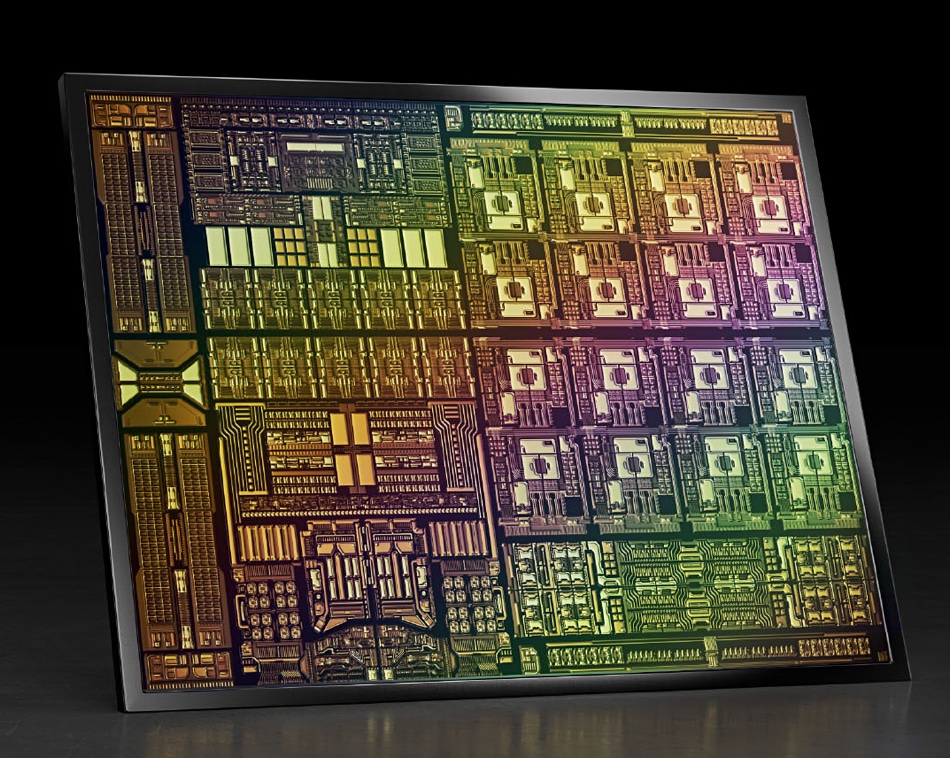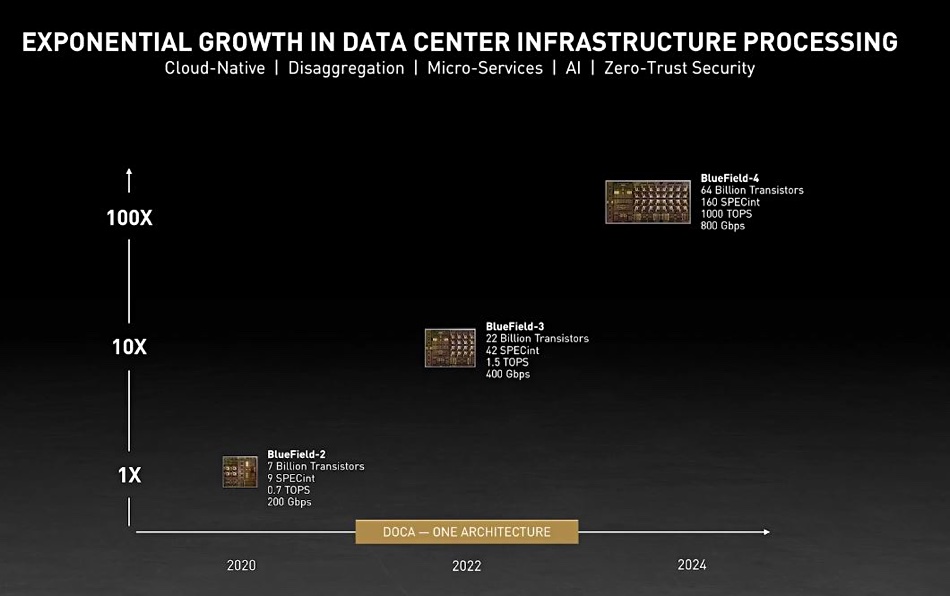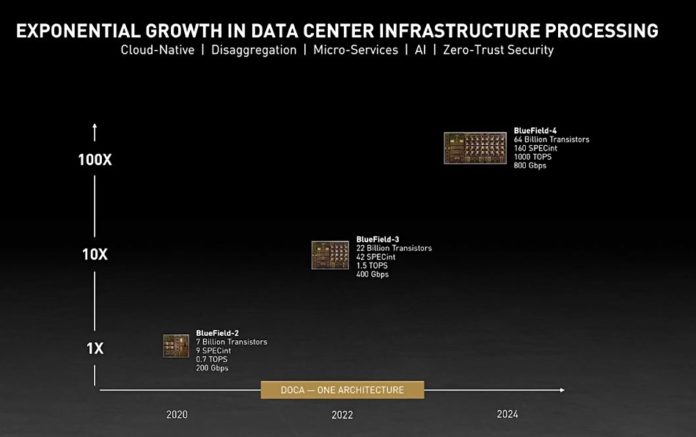Nvidia says its next-generation BlueField SmartNIC device, launched today, will deliver the most powerful software-defined networking, storage and cybersecurity acceleration capabilities for data centres.
Update: 13 April 2021. Updated Nvidia roadmap diagram added with revised SPECint numbers.
Doubled Arm core count, doubled network speed and PCIe Gen 5 support will make Nvidia’s third generation BlueField hardware deliver a five times higher SPECINT score than the gen 2 BlueField device. Nvidia is placing BlueField-3 in the AI and “accelerated computing” market, and says the DPU will free up x86 servers for application processing.
Jensen Huang, Nvidia founder and CEO, said in a press statement: “A new type of processor, designed to process data centre infrastructure software, is needed to offload and accelerate the tremendous compute load of virtualization, networking, storage, security and other cloud-native AI services. The time for BlueField DPU has come.”
Nvidia gained the BlueField technology via the Mellanox acquisition in March 2019. Bluefield is a system-on-a-Chip (SoC) which offloads a host server CPU by performing tasks such as interfacing to storage devices, security checking, and network data transmission. Sample shipping of BlueField-2 was announced in November last year and the device is now generally available.

BlueField-3 will have 16 x Arm A78 cores, providing ten times more compute power than BlueField 2, 400Gbit/s bandwidth and the aforementioned PCIe gen 5 support – four times faster than PCIe gen 3. Nvidia will include accelerators for software-defined storage, networking, security, streaming, line rate TLS/IPSEC cryptography, and – like BlueField-2 – precision timing for 5G telco and time synchronised data centres.
BlueField-3 is rated at 42 SPECint and 1.5 TOPS (TeraOps).

In comparison BlueField-2 is equipped with eight x A72 Arm cores, 200Gbits/s Ethernet/InfiniBand networking, dedicated security engines and two VLIW accelerators. It supports NVMe over Fabric (NVMe-oF) Storage Direct, encryption, elastic storage, data integrity, compression, and deduplication. Bluefield-2 delivers 9 SPECint and 0.7 TOPS.
Nvidia’a DOCA software development kit (SDK) enables developers to create software-defined, cloud-native, DPU-accelerated services, leveraging industry-standard APIs, for BlueField-2 and BlueField-3.

Both BlueField products can isolate data centre security policies from the host CPU and build a zero-trust data centre domain at the edge of a server. BlueField-3 can also function as the monitoring, or telemetry, agent for Nvidia’s Morpheus cloud-native cybersecurity framework.“ Morpheus combines Mellanox in-server networking and Nvidia AI to do real-time, all-packet inspection to anticipate threats and eliminate them as they arise,” Huang said.
Morpheus uses machine learning to identify, capture and take action on threats and anomalies such as leaks of unencrypted sensitive data, phishing attacks and malware. It can analyse every network packet with line-rate speed and no data replication.
A BlueField ecosystem is being set up by Nvidia with:
- Server suppliers Dell Technologies, Inspur, Lenovo and Supermicro integrating BlueField DPUs into their systems,
- Cloud service providers Baidu, JD.com and UCloud using BlueField,
- Support from system software suppliers Canonical, Red Hat and VMware,
- Fortinet and Guardicore in the cybersecurity area supporting BlueField,
- Support by storage providers DDN, NetApp and WekaIO,
- Edge IT platform support from Cloudflare, F5 and Juniper Networks.
BlueField-3 is backwards compatible with BlueField-2 and expected to sample in the first quarter of 2022.
Comment
BlueField is comparable to Fungible’s DPU in its scope but the Fungible Data Center processor and FS1600 Storage Processor are elements in Fungible’s composable datacenter scheme which uses its own network fabric. Nvidia is not presenting Bluefield as a means to the end of composing disaggregated data centre resources.
However, BlueField is software-defined. That implies that APIs could be developed so that servers and storage systems front-ended by BlueField could function in a composable data centre environment.
The diagram above showing BlueField roadmap to gen 4 is hardware-centric. Blocks & Files expects Nvidia to increase the software element as its ideas about the data centre future meet and react to composable data centre concepts being promoted by suppliers such as Fungible, HPE (Synergy) and Liqid.
We think Nvidia will in due course add Compute Express Link (CXL) support for Bluefield, as the CXL link can run across a PCIe Gen 5 bus.








